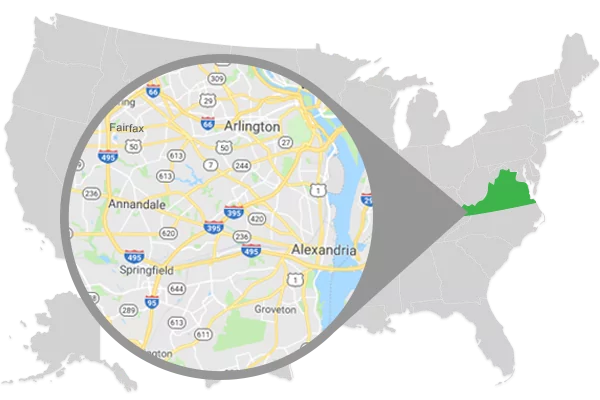What are flying snakes and where are they found?
The Paradise Tree snake known as Chrysopelea Paradisi is found mostly in south and southeast Asia is known for its ability to glide through the air, making it seem like they are flying. Snakes are the only limbless vertebrates capable of flying. These snakes, while not a nuisance, threat or native species to Virginia are incredibly fascinating and are being studied by researchers in Virginia. The paradise tree snake forms its habitat in forests. They are venomous with their venom being slightly more mild than most venomous snakes. The venom only really affects small prey such as the lizards they eat. They have fangs in the back of their mouths and they have the ability to constrict the animals they eat. Paradise tree snakes are about four or so feet long. They are slender snakes with cylindrical bodies and a flat head. They have five yellow spotted bands across their heads and have a spotted pattern throughout their bodies and can have a red flowery band on their middle section.The adult snakes have bright yellow scales on their stomachs and yellow and black scales along their backs. The scales on the snakes’ bellies allow them to climb up vertical surfaces such as trees. They need to be high in the canopy of the trees to launch themselves into flight. These snakes are believed to produce between six and 11 offspring at a time, but there is not a significant amount of information known about the gestation period and other breeding habits.
How do the snakes fly?
Snakes are agile and able to swim and crawl through sand. Physicists have studied the dynamic abilities of the snake breed that make it great for flying. Snakes do not fly in the sense that a bird does, but rather in a way that is similar to a flying squirrel with the ability to glide. They glide from tree to tree in the forest. They can’t launch themselves from the ground or elevate themselves, rather they do jumps that resemble a parachute. The snake flattens its head and its bodies, even making its ribs flatter. The only part of the snake that doesn’t flatten is its tail. One distinct factor about these snakes is that traveling waves are sent through its body prompting its ability to glide through the air from tree to tree. These traveling waves are unidirectional (traveling in one direction) and are really just muscle contractions that allow them to move a way similar to an earthworm. The snake experiences lift and drag due to their movements. Lift and drag are typical components of flight that allow a plane for instance to rise and fall throughout the air.
The snake has three main contributing factors that make them able to glide through the air. The first factor is the way they launch themselves from trees. It is called the anchor j loop take off which is the only true means of snakes jumping. In this style of take off, the snake forms a loop with the front part of its body while keeping its lower half still and accelerating up and away from the tree branch its lower half is resting on. The kinematics associated with snakes in general is complex and with flying snakes, there are far more complexities. The other style that the snakes use to take off for flight is called the sliding j loop take off, but the most common is the anchored j loop. The second component of their ability to fly is the way they contort their body while in flight. The snake’s cross sectional part of their body is formed into a triangle. The third factor is the aerial undulation. The snakes turn their tail from side to side which gives them a degree of control over their gliding. The snakes are clumsy in their landing and are only capable of ending their flight with a crash landing.The flight allows them to move quickly, either making them able to pursue prey or escape predators.
The aerial undulation is how the form of their body rises and falls during flight. The snake’s ability to fly further is dependent on their position, acceleration and velocity. Something interesting about the snake is it is able to control its flight, remain stable and maneuver its body in certain ways to fly in specific directions. These snakes are believed to be able to fly for about 300 or 330 feet at a time.They are incredibly quick and travel at speeds of around 33 feet per second. The snake forms its body into an S shape which causes it to have more air pressure which aids in keeping them airborne. While they travel quickly, they do not remain in the air very long but the way they tip their body increases their ability to stay stable while in flight. Snakes unlike birds do not have wings that keep them aloft. Their glide is more like falling but in a way unique to this species of snake alone.
The only paradise tree snakes we have in the United States are the ones that were imported from Asia and are used for research. The snakes are kept solely for research purposes and are kept in a habitat and climate that closely resembles their native habitat in Asia. These snakes have not been kept in captivity before so there is no real understanding of their lifespan or some other crucial facts about them. Virtual experiments have been done in addition to the physical experimentation to ensure the best information is collected concerning this interesting aspect of the snake and its flight. These snakes are very unique and interesting creatures who have obviously utilized their incredible adaptation to their benefit. These snakes are native to Asia, but they have been studied at Virginia Tech in Blacksburg, Virginia by a professor and researcher of biomechanics named Jake Socha.
While the Paradise Tree snakes at Virginia Tech are the only ones of their species present in Virginia or even the United States for that matter, these snakes are not to be worried about. While we don’t have these snakes roaming wild through our state, there are other snakes that are native to our area and might wreak havoc on your property.
If you have a snake problem or a problem with other wildlife in or around your home, contact us today.












